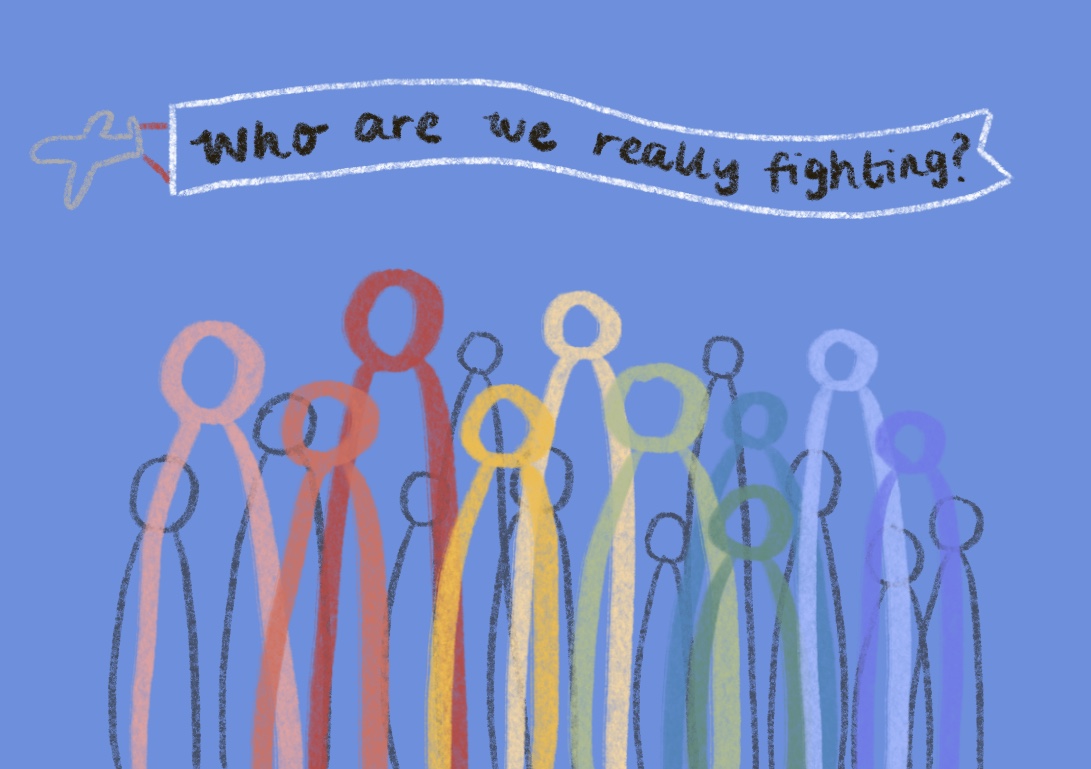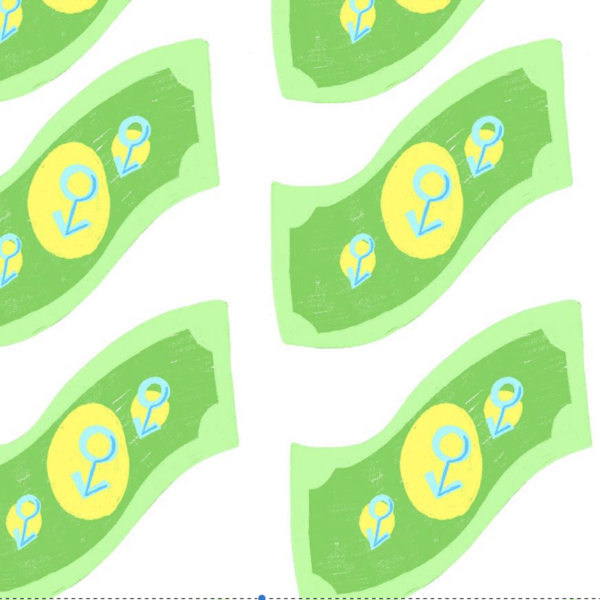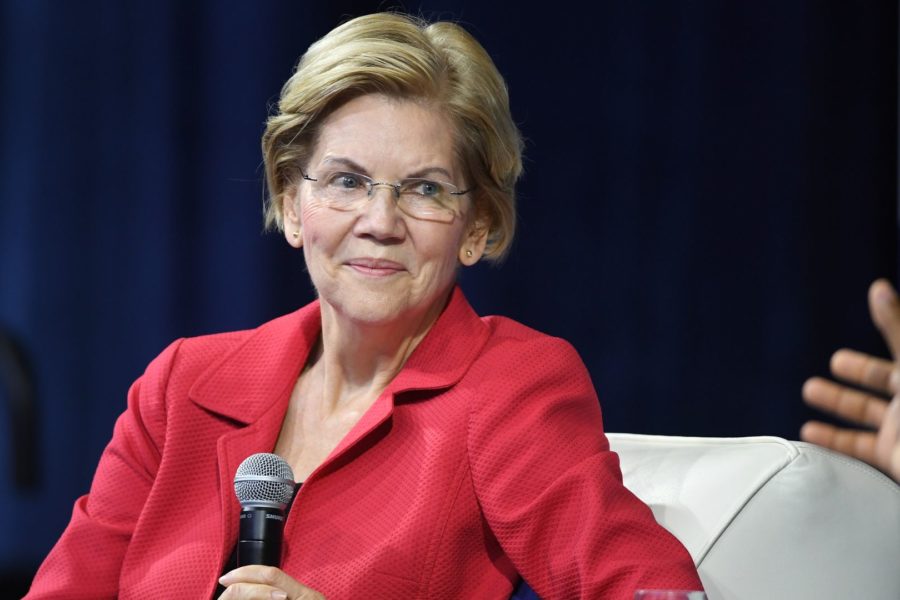Considering that we are currently witnessing one of the most serious conflicts in Europe in recent decades, you’d be forgiven for wondering why so much of the surrounding discourse appears preoccupied with pronouns, gender, and sexuality – topics that perhaps, on their surface, appear only tangentially, if at all, related…

The Home Front of the Culture War
Content warning: homophobia, transphobia
“Now is the time to end the culture of self-doubt, the constant self-questioning and introspection – the ludicrous debates about languages, statues and pronouns…”
Liz Truss, Foreign Secretary and Minister for Women and Equalities, March 19 2022, Conservative Spring Conference.
“Nothing like the threat of nuclear holocaust to remind us how indulgent arguing about gender pronouns and net zero really are.”
Darren Grimes, 25 Feb 2022, Twitter.
Considering that we are currently witnessing one of the most serious conflicts in Europe in recent decades, you’d be forgiven for wondering why so much of the surrounding discourse appears preoccupied with pronouns, gender, and sexuality – topics that perhaps, on their surface, appear only tangentially, if at all, related.
However, if we look back to previous conflicts, throughout the twentieth century, it is evident that gender and sexuality has always been a point of contention: from the exclusion or expulsion of queer people from the military and government service to the 2001 invasion of Afghanistan being justified as a feminist intervention for the sake of women’s rights. Below is an exploration of the discourse surrounding queer people and war in modern British history. This is far from a comprehensive list, as it is skewed by my own academic background in studying the First World War. However, I believe that I have highlighted enough examples to illustrate common tropes.
It is worth acknowledging and complicating the fact that the majority of examples given below appear to reference queer men. Firstly, although women have always taken part in war, at home and on the frontline, the soldier is, to quote historian Graham Dawson, the “most durable and powerful [form] of idealized masculinity within Western culture.” Martial values such as courage and aggression have historically been considered masculine traits. Thus, it is men who are considered emblematic of the military and the nation’s security. Secondly, I am conscious that the current discourse surrounding queer people and the war in Ukraine is a facet of the larger culture war about trans rights.
The contemporary quotes I’ve scattered throughout this article reference pronouns, gender-neutral bathrooms, and the gender binary. Whilst the historical examples I’ve given may appear, to the modern reader, to largely refer to queer men, these quotes come from a time where understandings of sexuality and gender were fundamentally different. The distinction between gender identity and sexuality, which is largely accepted today, is a relatively recent phenomenon. Throughout much of the twentieth century, queer people were widely understood as a third gender, outside of the typical binary, or, as poet and philosopher Edward Carpenter claimed in 1912, occupying “an intermediate position between the two sexes.” As a result, when commentators from the twentieth century – especially the earlier half – discuss “urnings”, “inverts”, “Sodomites”, and “homosexuals”, these are terms which can refer to gender identity and presentation, as well as sexuality.
The tropes discussed below do not directly mirror the way right-wing commentators talk about queer people in relation to war today. Throughout the twentieth century, queer people were popularly considered a direct threat to the nation’s security – they were seen as traitors, failing to contribute to the war effort, or somehow responsible for military setbacks. By contrast, the contemporary quotes highlighted throughout this article do not draw quite such a direct line between queer people as individuals and military success. Queer people themselves are not necessarily considered dangerous, but campaigns for LGBTQ+ rights are thought to be distracting or weakening the nation. Despite this, contemporary forms of discrimination and intolerance have a historical legacy, and this is worth exploring.
“Is it any wonder Russia has been building up a vast army while we’ve been building safe spaces and gender neutral toilets.”
Caroline Malone, March 1 2022, The Express.
Throughout the twentieth century, in times of war or heightened international tension, queer people have been understood as a foreign presence or an “enemy within”: posing a covert threat to the safety of the nation, at the same time as it is besieged by external enemies. The construction of queerness as a foreign or imported vice has existed since the Middle Ages; it is a flexible conspiracy theory, with the country of origin changing with the tides of international relations.
During the First World War, in Britain, queerness was associated with the threat from Germany – with many going so far as to believe that queerness was imported from Germany, or somehow directly responsible for military setbacks. This belief was neatly summarised by Lord Alfred Douglas who, despite being the former lover of Oscar Wilde, wrote in his 1916 poem The Rossiad: “Two filthy fogs blot out thy [England’s] light / The German and the Sodomite.” That same year, the trial of Irish nationalist Sir Roger Casement appeared to confirm these suspicions. Casement was on trial for his involvement in a plot to allow a German submarine to land in Ireland. Prior to and during Casement’s trial and appeal, the British government circulated his private diaries, which contained explicit descriptions of his sexual encounters with other men. The diaries served to compound Casement’s villainy in the eyes of the public and expedite his hanging.
Two years later, an article by journalist Arnold Henry White, published under the name of MP Noel Pemberton Billing, claimed that Germany was under the control of “urnings”, who were engaged in a “systematic seduction” of British men. The article warned that the German state had a “Black Book”, which was inscribed with the names of 47,000 British men and women who were known for their sexual deviance and thus vulnerable to blackmail. The idea that queer people were a threat to national security, due to their vulnerability to blackmail or propensity for disloyalty, was still in circulation decades later. In 1951, when British spies Guy Burgess and Donald MacLean defected to the USSR, the Sunday Pictorial denounced the men as “sex perverts” and warned “homosexuals… are known to be bad security risks. They are easily won over as traitors.”
The idea of an international queer conspiracy, or queer people having divided loyalties, is another pervasive trope. During the First World War, Arnold White, then the editor of The English Review, claimed that “Londoner urnings have more in common with Teuton urnings than with their own countrymen”. Similarly, in 1957, an editorial in The Scotsman cautioned that “homosexuals… owe their primary allegiance to the homosexual group before any other authority or loyalty in their lives.”
“…it is a dangerous form of decadence […] Neither of us [the United Kingdom or the United States] can afford the luxury of indulging in this painful woke psychodrama.”
Oliver Dowden, Conservative MP, February 2022, speech to right-wing think tank the Heritage Foundation.
Not only throughout the twentieth century, but in centuries prior, queer people have been condemned as both a symptom and a cause of a society in decline. Oliver Dowden’s use of the word “decadence” is a particularly striking example of contemporary discourse having historical parallels. At the turn of the nineteenth century, British commentators were obsessed with the interlinked concepts of “degeneracy” and “decadence”: the British nation and Empire were widely thought to be in decline, whilst British men were becoming increasingly effeminate, indulgent, and both physically and morally corrupt. War was considered an opportunity to reverse the nation’s fall and rehabilitate British masculinity. In one speech, Prime Minister David Lloyd George stressed the importance of no longer allowing Germany to “believe and to preach that we are a decadent and degenerate people.”
Although the concept of “decadence” is largely confined to the earliest decades of the twentieth century, the idea continued to evolve. As late as 1954, Edward Turnour, Conservative MP and Earl Winterton, claimed that “few things lower the moral fibre and injure the physique of the nation more than tolerated and widespread homosexualism.”
“The woke West is now more interested in pronouns than peace.”
Mark Dolan, 25 February 2022, GB News.
Finally, pacifism and the decision to resist conscription have historically been associated with queerness. Historian Graham Dawson argues that during wartime, martial masculinity is recognised and promoted by the state, whilst subversive forms are met with “repression in explicitly national terms.” Throughout the First World War, the soldier was held up as the pinnacle of masculinity – by the government, the Church of England, the press, schools, and popular fiction. By contrast, refusal to serve was considered a failure of masculinity. As a result, conscientious objectors were understood by their detractors to be gender non-conforming, feminine, or queer.
One example of this construction of conscientious objectors as queer comes from a 1916 cartoon from Punch magazine. Two conscientious objectors walk in step, with their noses held in the air, one carrying an umbrella with a limp wrist. The two men are styled as ‘dandies’: one in a bowler hat and suit, the other in a jacket and breeches, with a large cravat, and long, flowing hair. The dandy style is most famously associated with Oscar Wilde who, following his highly publicised trial and imprisonment in the 1890s, had become visual shorthand for the upper-class, effeminate queer man. Another example comes from an undated postcard, credited to Archibald English. In this image, a limp-wristed objector is pictured facing a “naughty, unkind German”, threatening him with a smack on the wrist. Here the objector is mincing, childish, and ineffectual. His gestures serve as effective shorthand for homosexuality; audiences viewing the cartoon would recognise similar mannerisms from music halls, performed by men dressed as women, or men playing the stock character of the effeminate ‘sissy’.
Whilst Mark Dolan is not going so far as to accuse queer people of being unwilling to serve, he does perpetuate the idea that queer people and their allies are disinterested in the safety of the nation, or fail to grasp the seriousness of war.
“Recently they cancelled the children’s writer Joanne Rowling because she – the author of books that have sold hundreds of millions of copies worldwide – fell out of favour with fans of so-called gender freedoms…”
President Vladimir Putin, 25 Mar 2022, televised press conference.
Russia is an institutionally homophobic and transphobic country. Since 2013, it has been effectively illegal to hold pride events or speak in favour of LGBTQ+ rights in the presence of minors. Whilst transgender people are allowed to change their legal gender, they have no legal protections from discrimination on the grounds of gender identity or expression. With this in mind, it is arguably counter-intuitive for the anti-Russia, pro-war commentators quoted throughout this article to hold homophobic and transphobic opinions themselves. If Liz Truss wants to show Britain’s opposition to Russia and Putin, then surely she should be condemning transphobia in Russia and at home. However, when we turn to conflicts of the past, it becomes clear that these commentators are not necessarily inspired by Russia, but instead drawing on a historic and homegrown tradition of blaming marginalised groups in times of uncertainty.
View both images referenced here:
Baumer, Lewis. ‘Mr Punch’s War-time Revue’, Punch, July 15, 1916, 22: view here: <https://punch.photoshelter.com/image?&_bqG=0&_bqH=eJwrMs0uyQgOiUxxSQ_2CTc19a1M9Q80SXaNyvW1MjQAIjAGkp7xLsHOtsn5ecXJmal5JZn5pcXa.UlZqckl.UXFamDZeEc_F9sSIDs02DUo3tPFNhSkM8srK9M0KCkvxzNdLd7ROcS2ODWxKDkDADRHJv8-&GI_ID=>
English, Archibald. ‘The Conscientious Objector at The Front!’, 1916. Swarthmore College Peace Collection < https://cosandgreatwar.swarthmore.edu/exhibits/show/learning-more/item/1147#?c=0&m=0&s=0&cv=0&xywh=-193%2C371%2C1028%2C544>
Ruby Hann (she/her), Political Editor
Header image by the wonderful Lucia Villegas
Bibliography:
Bibbings, Lois. Telling Tales About Men. Manchester: Manchester University Press, 2009.
Carpenter, Edward. The Intermediate Sex: A Study of some Transitional Types of Men and Women. London: George Allen & Co., 1912.
Cohler, Deborah. ‘Sapphism and sedition: producing female homosexuality in Great War Britain’, Journal of the History of Sexuality 16:1 (2007), pp.68-94.
Cook, Matt. (ed.), A Gay History of Britain: Love and Sex Between Men Since the Middle Ages, Oxford: Greenwood World Publishing, 2007.
Davidson, Roger; Davis, Gayle. ‘‘A Field for Private Members’: The Wolfenden Committee and Scottish Homosexual Law Reform, 1950–67’, Twentieth Century British History 15:2 (2004), pp.174-201.
Dawson, Graham. Soldier Heroes: British adventure, empire and the imagining of masculinities. New York: Routledge, 1994.
Gullace, Nicoletta F. The Blood of Our Sons: men, women and the renegotiation of British citizenship during the Great War. Basingstoke: Palgrave Macmillan, 2004.
Huxley, David; David, James. ‘No other excuse: Race, class and gender in British Music Hall comedic performance 1914–1949’, Comedy Studies 3.1 (2012), pp.17-28
Ledger, Sally. ‘In Darkest England: The Terror of Degeneration in “Fin de Siècle”’, Literature and History 4:2 (1995), pp.71-86.
Tschacksch, Nadine. ‘Sexual Identities and Patriotism in Wartime Britain: Literary No-Man’s Land’, English Literature in Transition, 1880-1920 60:4 (2017), pp.449-470.Woods, Gregory. Homintern: How Gay Culture Liberated the Modern World. New Haven; London: Yale University Press, 2017.





Leave a Comment